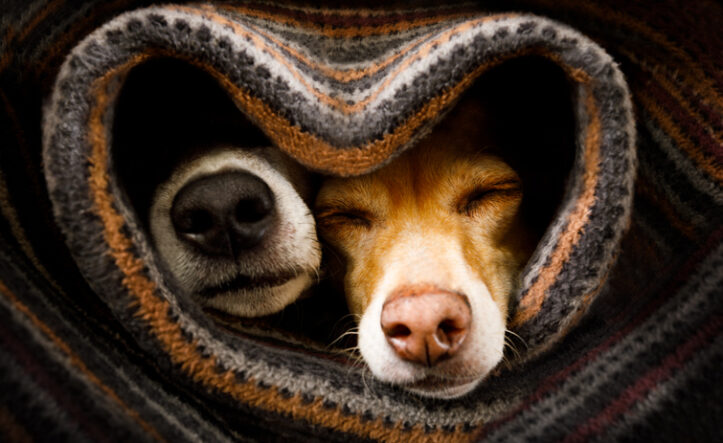
Simple Ways to Ensure the Safety of Your Pets In Cold
Pet owners are particularly worried about the onset of the winter. More than themselves, they are concerned about how to keep their animals safe and comfortable. Veterinarians support pet parents’ anxiety as well.
Pets are susceptible to hypothermia and frostbite and can succumb to paw injuries in cold weather. Read on to understand how you, as a pet owner, can mitigate, if not eliminate, the risks of your dear pets falling sick.
Simple precautions to keep your pets safe in the cold weather
Reduce the time spent outdoors
Experts recommend spending less time outdoors with your pets in case the weather is too cold. While no precise duration is mentioned, if the temperature is at or below freezing, Dr. Mandell says, “no more than 10 to 15 minutes is a good benchmark.” She adds, “For most, going outside to go to the bathroom, then back inside, similar to when it’s too hot, is a good rule.”
According to Dr.Rebecca Ruch-Gallie, a gut check could be to ask yourself: “Am I comfortable?” If yes, probably your pet is, too. Nevertheless, you must take into consideration other weather conditions – lounging in the sun on a cold yet calm day is different from spending too much time outdoors on a snowy day.
Assess your pet’s tolerance to cold
According to animal healthcare experts, a pet’s tolerance to cold temperatures largely depends on factors like age, physical makeup, and average health condition. Most researchers opine that animals with short legs tend to feel colder than those with longer ones as their bodies get exposed to cold faster.
Dr. Ruch-Gallie said, “Look at a greyhound, for example, who has no subcutaneous fat and has very little hair. Those guys don’t tolerate cold as much as some of the breeds that have double coats.”
Depending on their ages, extremely old or extremely young animals also find it difficult to regulate their body temperatures. Again, based on an existing health condition such as arthritis, an older one suffering from such an illness may find tackling the cold still difficult.
Understand when your pet is feeling cold
Mammals generally indicate when they feel uneasy in the cold. As Dr. Ruch-Gallie says,” Where we get into difficulties is with that dog that loves to go out and play in the snow, and “all of a sudden, they realize they can’t feel their feet anymore.”
Dr. Gabrielle Fadl, senior director of medical programs and projects with Bond Vet in New York City, said, “If they’re shivering, if they’re less willing to walk, if they’re picking their feet up as if they are uncomfortable, those are all signs to look out for.” She mentions that dog owners must check the paws for any ice or snow when outside, or else they could crack and bleed when they get indoors.
Concerning her cats, Dr. Fadl adds,” Even with my own two cats, I find them snuggling together more than they do in the warmer months. Just make sure your animal has a bed, blanket, or even a “hidey hole.”
Prevention is the mantra
Animal health experts say that on freezing or below-freezing days, it’s better to make your pet wear a jacket if they can tolerate it. Likewise, they can wear booties if they have to walk on ice or snow, which could crack their paws. Alternatively, if your pets resist booties, apply balms that protect their paws from the cold weather and prevent cracking or bleeding. Always ensure you wipe their paws once you are back home.
Additionally, vets advise slightly grooming your pet by trimming any fur between the toes, as that prevents the formation of ice balls. However, try not overdoing it.
Dr. Ruch-Gallie says, “Their coats are designed to try to keep their temperature regulated. You have the potential to really mess that up.”
To sum up, pets are also affected by cold weather; their behaviors vary, though. Their extent to tackle the biting cold depends on factors like age, health conditions, physical development, and more. Pet owners must follow the guidelines and the suggestions provided by animal healthcare experts to ensure their dear friends stay comfortable and safe in the winter.

